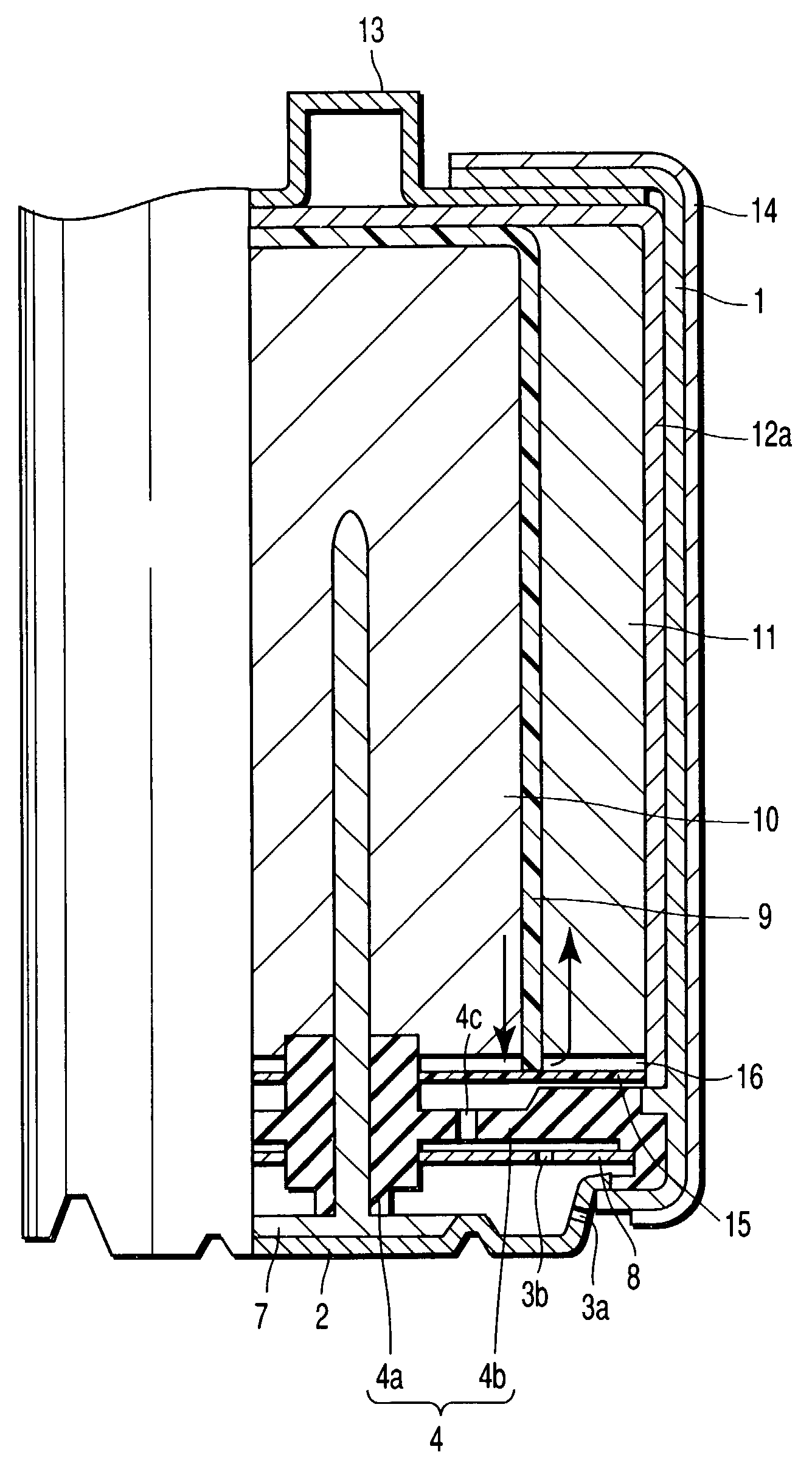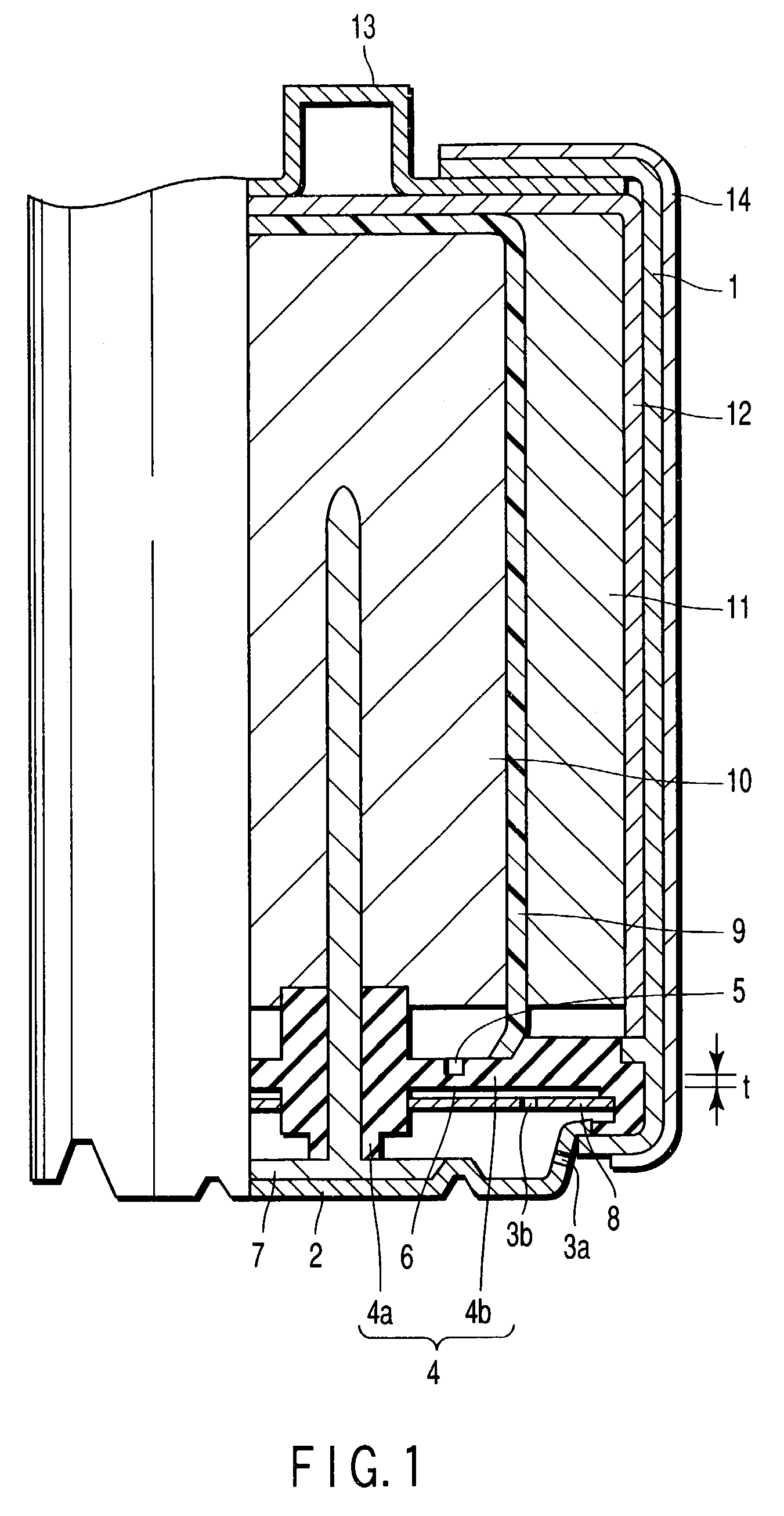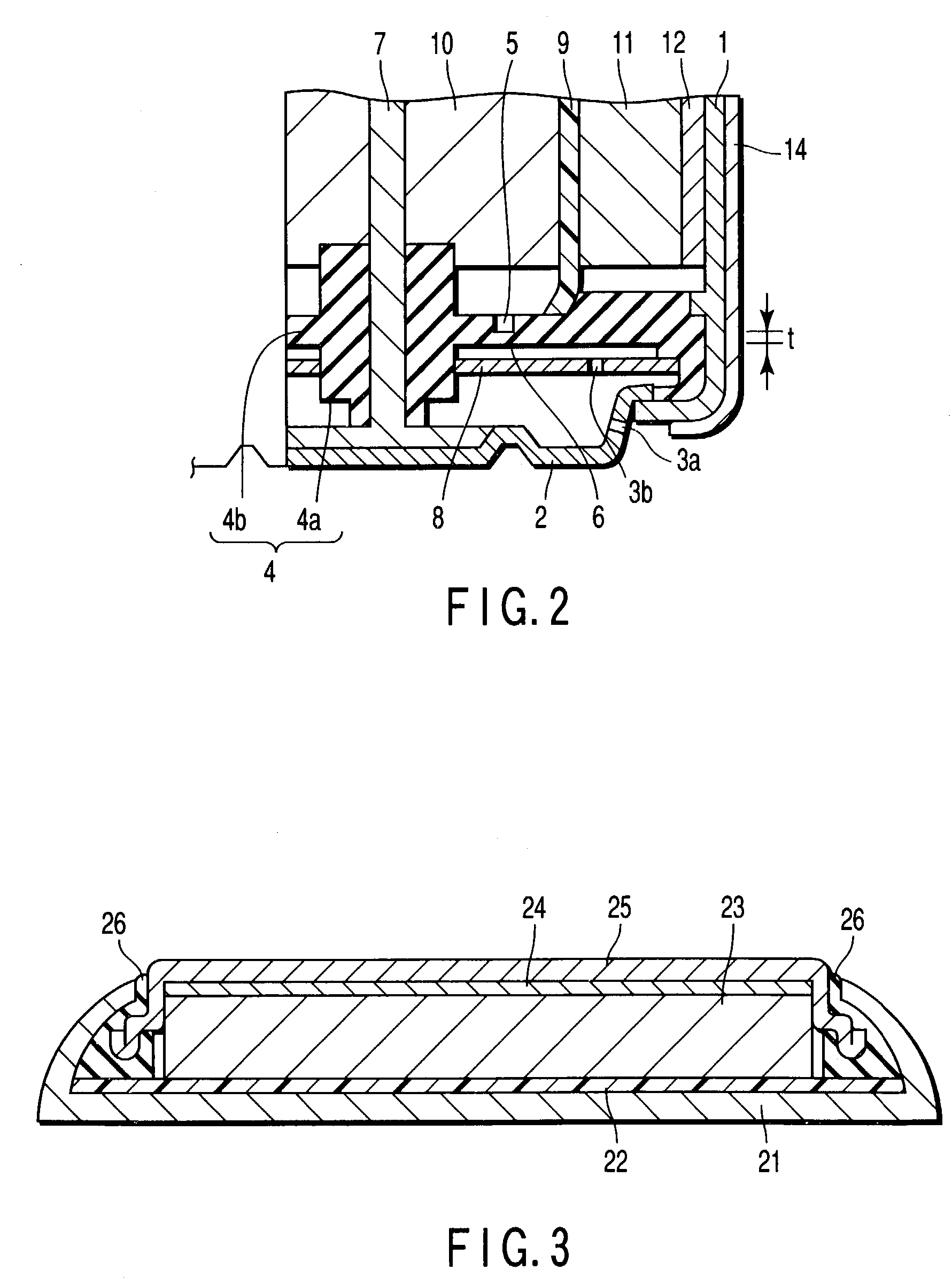Aluminum negative electrode battery
a negative electrode battery and negative electrode technology, applied in the direction of cell components, vent arrangements, jackets/cases materials, etc., can solve the problems of large self-discharge, large hydrogen gas generation, and low capacity of most batteries, so as to improve battery voltage and enhance the ion conductivity of electroly
- Summary
- Abstract
- Description
- Claims
- Application Information
AI Technical Summary
Benefits of technology
Problems solved by technology
Method used
Image
Examples
example 1
[0254]An aluminum negative electrode battery having an alkaline dry cell structure as shown in FIG. 1 and FIG. 2 was manufactured in the following procedure.
[0255]Using electrolytic manganese dioxide (MnO2) as positive electrode active material, 10 wt. % of acetylene black as conductive agent and 3 wt. % of polytetrafluoroethylene as a binder were added and mixed in this positive electrode active material, and pressed and formed in a cylindrical form, and a positive electrode mixture was prepared. A carbon film of carbon fiber of 100 μm in thickness was prepared as a positive electrode current collector.
[0256]An aqueous solution was prepared by mixing 1 M / L of AlCl3, 0.1 M / L of 2,2-bipyridyl, 0.5 M / L of KCl, and 0.2 M / L of Al(NO3)3.
[0257]Mixing 95 wt. % of aluminum powder with purity of 99.99% (4N) and 4 wt. % of acrylic acid polymer as thickener, an electrolyte was added to prepare a negative electrode gel. A metal rod of tungsten was prepared as negative electrode current collecto...
example 19
[0270]A coin type aluminum negative electrode battery as shown in FIG. 3 was manufactured in the method explained below.
[0271]Manganese dioxide (MnO2) as positive electrode active material, 7.5 wt. % of acetylene black as conductive agent and 5.0 wt. % of polytetrafluoroethylene were mixed, and then pressed and formed in pellets to prepare a positive electrode mixture.
[0272]An aqueous solution was prepared by mixing 1 M / L of sulfuric acid, 0.25 M / L of KCl, 0.1 M / L of 2.2-dipyridyl, and 0.2 M / L of Al(NO3)3.
[0273]In a negative electrode container of cylindrical form with a bottom, the container being made of aluminum with a purity of 99.99%, a glass fiber sheet of 30 μm in thickness was accommodated as a separator, a positive electrode mixture was arranged on this separator, and a tungsten positive electrode current collector was arranged further on the positive electrode mixture. In succession, after an electrolyte was poured in, a metal positive electrode container of cylindrical fo...
example 31
[0281]An aluminum negative electrode battery having a manganese dry cell structure as shown in FIG. 4 was manufactured in the following procedure.
[0282]10 parts by weight of electrolytic manganese dioxide and 1 part by weight of acetylene black were mixed. 15 parts by weight of an electrolyte, which is an aqueous solution containing 1.5 M / L of AlCl3, 0.1 M / L of 2,2-bipyridyl, 0.2 M / L of Al(NO3)3 and 0.75 M / L of KCl, was added to the mixture, thereby obtaining a positive electrode mixture.
[0283]A separator and a bottom paper were set in a negative electrode can, made of aluminum with a purity of 99.99%, of cylindrical form with a bottom with 0.3 mm in thickness. This negative electrode case was filled with 9.5 g of the positive electrode mixture, a brim paper was arranged on the positive electrode mixture, and then a positive electrode current collector rod made of carbon was inserted. Sequentially, after a wax layer was arranged on the brim paper and an insulating washer was set in ...
PUM
 Login to View More
Login to View More Abstract
Description
Claims
Application Information
 Login to View More
Login to View More - R&D
- Intellectual Property
- Life Sciences
- Materials
- Tech Scout
- Unparalleled Data Quality
- Higher Quality Content
- 60% Fewer Hallucinations
Browse by: Latest US Patents, China's latest patents, Technical Efficacy Thesaurus, Application Domain, Technology Topic, Popular Technical Reports.
© 2025 PatSnap. All rights reserved.Legal|Privacy policy|Modern Slavery Act Transparency Statement|Sitemap|About US| Contact US: help@patsnap.com



